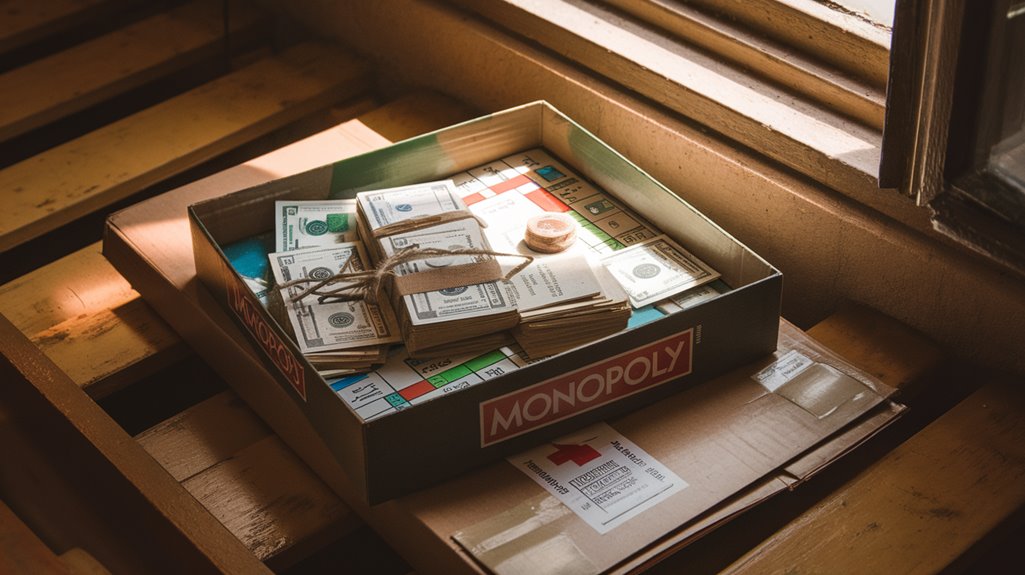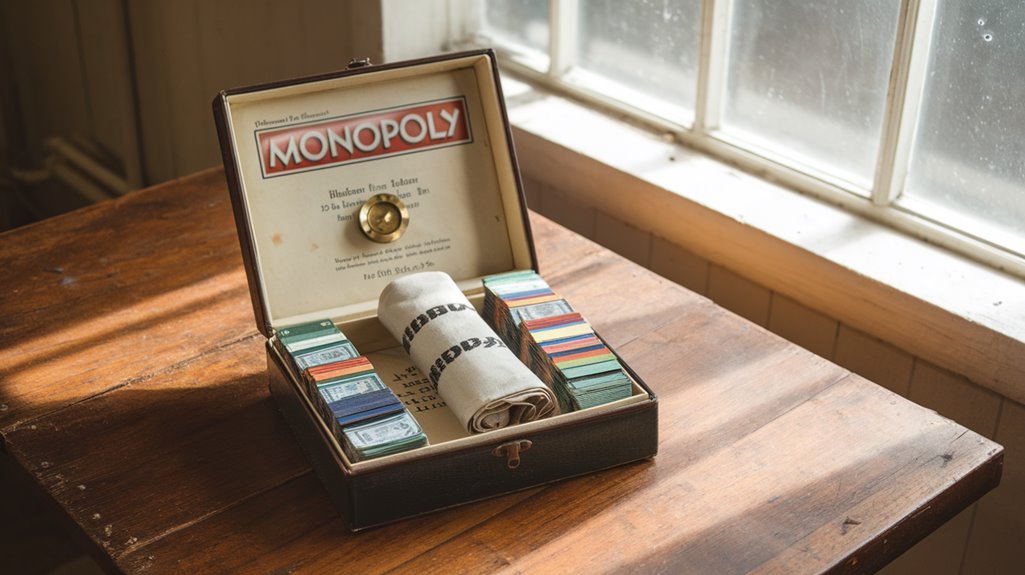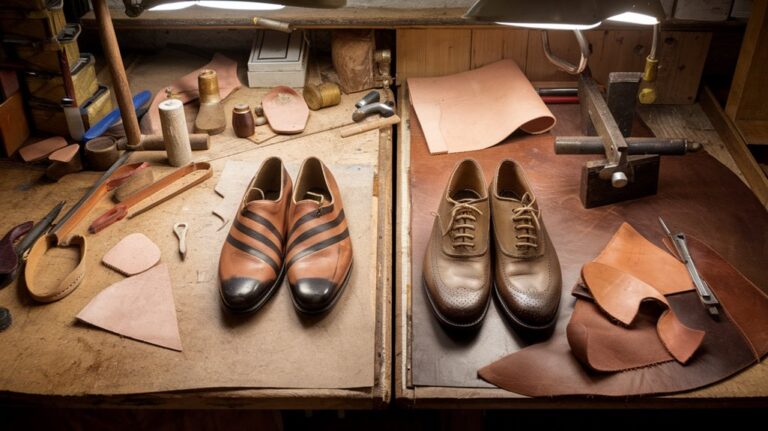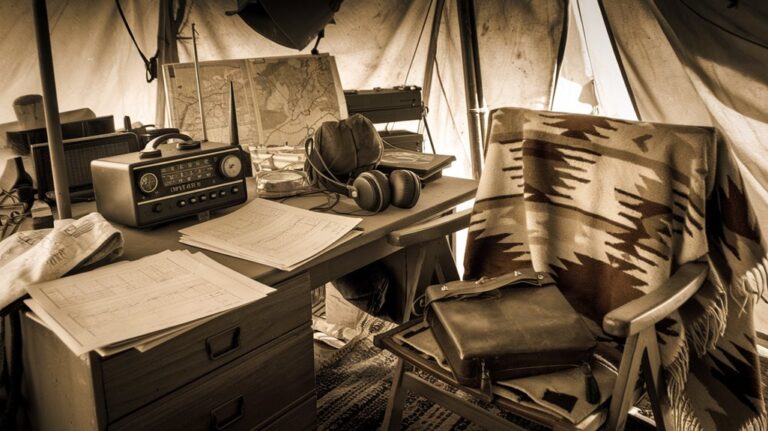WWII POWs Received Escape Tools in Monopoly Games
You've probably played Monopoly countless times, but the board game you know holds nothing compared to its wartime counterpart. During World War II, these seemingly innocent games became life-saving tools for Allied prisoners of war. Through a brilliant partnership between British Intelligence and game manufacturer Waddington, POWs received specially modified Monopoly sets containing hidden escape tools. What you'll discover about these secret modifications will transform how you view this classic family game.
The Secret Alliance Between MI9 and Waddington
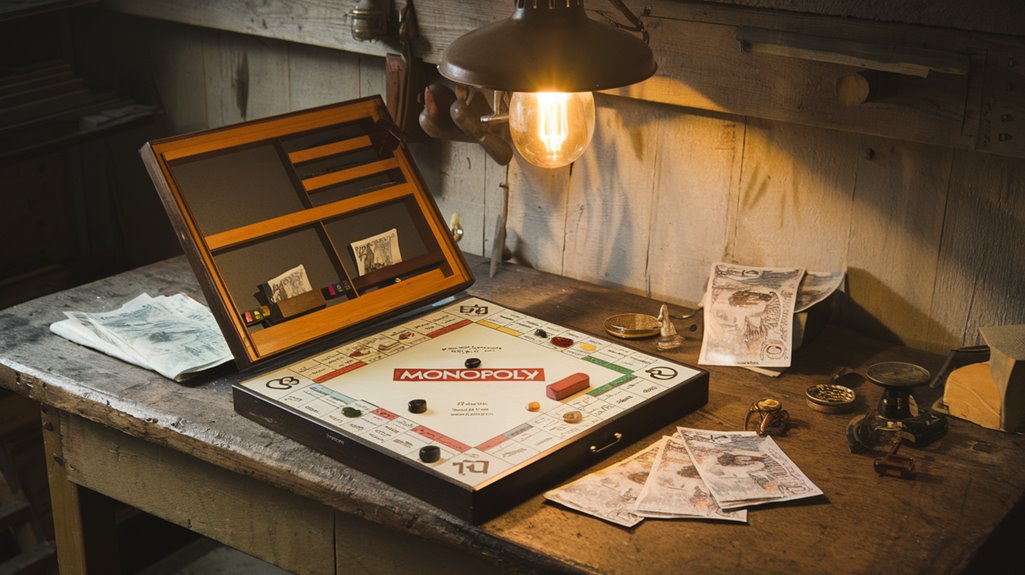
During World War II, British Military Intelligence (MI9) forged a remarkable alliance with game manufacturer Waddington to help Allied prisoners of war escape. This secret communication network centered around modified Monopoly games produced at Waddington's facility in Leeds, England. The games contained hidden tools, maps, and other escape aids carefully concealed to avoid detection by prison guards.
The wartime collaboration between MI9 and Waddington proved highly effective. The game manufacturer's expertise allowed them to skillfully insert small items like saws and knives into the games while maintaining their authentic appearance. The organization's innovative approach helped distribute 1.6 million concealed maps to POWs between 1942 and 1945. Similar to their work with Waddington, MI9 partnered with Jaques of London to create travel chess sets containing escape tools.
To guarantee successful delivery, MI9 established fake charitable organizations that distributed these special sets to POW camps across German-occupied territories. The operation's success relied heavily on precise coordination and absolute secrecy between both parties.
Hidden Treasures Inside the Game Board
Inside these specially crafted game boards, you'd find hidden maps printed on durable silk that wouldn't make noise or deteriorate when wet. The maps, carefully laminated within the boards, showed detailed layouts of Italy, Germany, Norway, Sweden, and Northern France, with strategic periods marking specific regions.
Between the game board's layers, you'd discover an array of escape tools: metal files, tiny compasses disguised as buttons, and even concealed currency mixed with the game's play money. MI9 agents coordinated the placement of these escape items under the direction of escape artist Christopher Hutton.
Real German marks were strategically placed among Monopoly bills to help POWs bribe guards or purchase supplies. The boards also contained small saws, knives, tape, and thread – everything a captured soldier might need for a successful escape attempt. John Waddington Ltd. was instrumental in printing these high-quality silk maps due to their pre-war expertise in silk printing.
Covert Distribution Methods
Secret agents masterfully orchestrated the delivery of modified Monopoly games to POW camps by exploiting humanitarian care packages.
You'll find that these covert operations relied on a clever system of bogus charities and multiple well-wishers to mask the true source of the escape aids.
The strategic deception went deeper than you might expect. MI9, the British Secret Service unit, coordinated deliveries through various channels, including sports equipment and musical instruments.
They'd guarantee only a select few knew the delivery methods, while escape committees inside the camps received and distributed the tools. The games contained silk and rayon maps hidden within their components, making them virtually undetectable.
When Germans discovered one method, they'd quickly adapt to new techniques. The continuous innovation and secrecy were vital – even most POWs didn't know how the tools entered the camps, making it nearly impossible for the Germans to trace their origin. The game pieces were carefully designed to include metal escape tools that could help prisoners break free.
Escape Tools and Their Clever Disguises
Hidden within seemingly innocent Monopoly games, ingenious escape tools gave Allied POWs their best chance at freedom during World War II.
The creative disguises were masterfully crafted – metal playing pieces concealed magnetic compasses, while small files helped prisoners cut through barriers. You'd find real currency from various European countries tucked between the game's play money, perfect for bribes or supplies. The packages were distributed through fake charities to avoid suspicion.
The playful deception went even further with silk maps hidden inside the game boards, showing escape routes through Northern France, Germany, Italy, and Scandinavia. British intelligence agents worked closely with game manufacturer John Waddington Ltd. to create these special edition sets.
You could spot these special sets by looking for subtle full stops after certain locations on the board. These games were truly works of espionage art, designed to fool German guards while giving POWs everything they needed to plan their escape.
The Impact on Allied POW Escapes
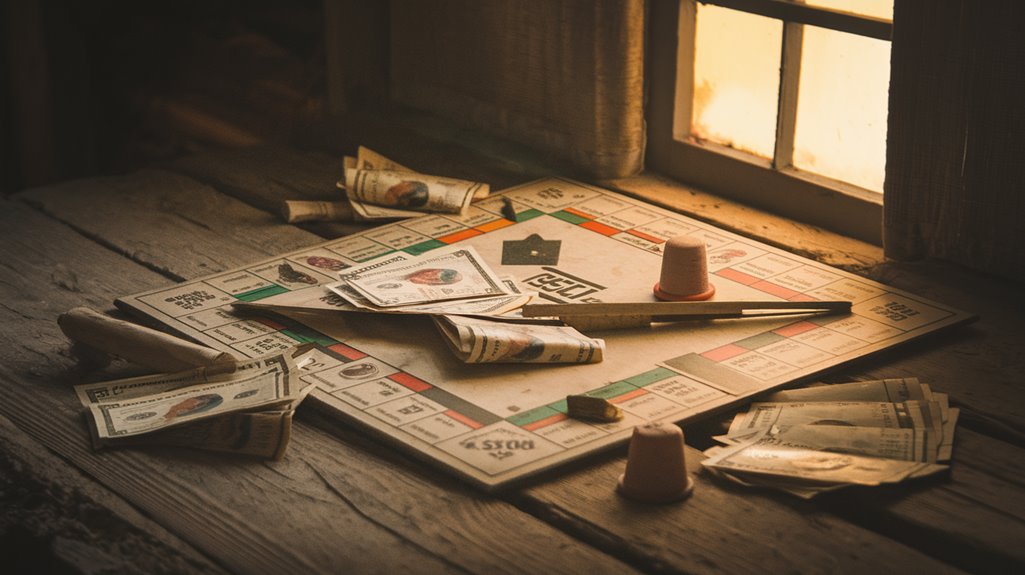
During World War II, ingeniously disguised Monopoly games became lifelines for countless Allied POWs, boosting both morale and escape success rates.
This form of psychological warfare against German captors proved remarkably effective, as prison authorities never discovered the game boards' true purpose. The escape kits were produced by Waddingtons in Leeds, who collaborated closely with British intelligence.
You'll be amazed by the strategic planning that went into these escape operations:
- Thousands of servicemen successfully escaped using hidden silk maps
- Game pieces helped POWs track guard movements and identify weak points
- Real currency concealed in the boards funded escape attempts
- Multiple versions contained different tools based on camp locations
The games' dual purpose of providing entertainment while facilitating escapes made them invaluable assets.
While the exact number of successful escapes remains unknown, British historians confirm that these modified Monopoly sets greatly impacted POW survival and liberation rates.
Preserving the Legacy of Wartime Innovation
The remarkable ingenuity behind these wartime Monopoly games represents just one example of countless innovations that emerged from World War II.
You'll find that preserving such historical significance requires careful documentation and collaboration between multiple stakeholders.
Stakeholder engagement in preservation efforts helps ensure these stories are accurately documented and shared with future generations.
Today, you can see how organizations work to protect these examples of wartime ingenuity through various preservation methods.
Modern technology, like augmented reality, helps tell these stories while keeping original artifacts intact. Through interviews, records, and partnerships between businesses and public institutions, you're able to understand how MI9 and Waddingtons worked together to create these life-saving escape kits.
The preservation of these innovations doesn't just honor the past – it teaches us valuable lessons about resourcefulness, adaptability, and the power of interdisciplinary collaboration during challenging times.

